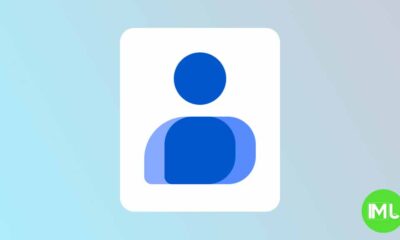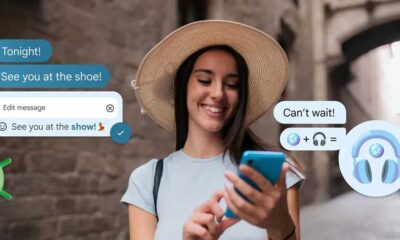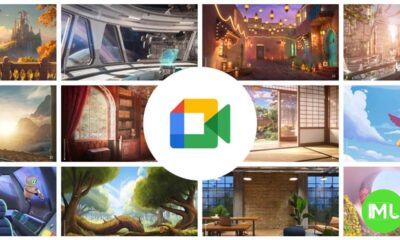Android
Google’s Gemini revamps Android experience and prepares Android 14 for older Chromecast models

Key Points:
- Google’s Gemini AI introduces a sleek floating panel on Android, enhancing user experience without interrupting ongoing tasks.
- The update includes a new YouTube feature for easy video summaries, boosting its usefulness for educational content.
- Older Chromecast models will receive Android 14, although some features will be exclusive to newer devices.
Google’s Gemini AI assistant is rolling out a new, user-friendly interface on Android devices. This update features a floating panel that is both visually appealing and functional. The panel includes a subtle glowing animation that activates when Gemini is called, making it easy to use without overwhelming the screen. The animation and layout are designed to complement your current activities, ensuring that Gemini can assist you without disrupting your workflow.
Unveiled at Google’s developer conference in May, this new interface is tailored for seamless multitasking. The panel provides useful information from Gemini while you continue working within your current app. If you prefer a more detailed view, a simple tap in the upper-right corner will expand the panel to full screen. Additionally, this interface integrates smoothly with Gemini’s image generation capabilities, allowing you to drag and drop images directly into apps like Gmail or Google Messages.
One of the standout features in this update is a new “Ask about this video” option for YouTube, replacing the older “Ask about this screen” prompt. This new feature is particularly useful for educational videos, allowing users to easily access summaries or ask questions about the content, making it easier to understand and retain information.
Overall, these enhancements mark a significant improvement in how Gemini interacts with Android users. The floating panel, in particular, is a smart addition that enhances the experience, making it easier to access AI-driven assistance on the go.
This update follows the recent release of Gemini Live, which introduced a more conversational interface for interacting with the AI. While Gemini Live offers more advanced features, such as natural conversation, it requires a Gemini Advanced subscription. In contrast, the new floating panel is available to all users, making it a more accessible option for many.
Currently, these new features are available to a limited group of users, but Google plans to expand access in the coming weeks.
In addition to Gemini’s updates, Google is also preparing to bring Android 14 to older Chromecast models, despite having recently launched the new Google TV Streamer. According to Android Authority, Chromecast with Google TV will receive the Android 14 update, even though the device has been discontinued. This was confirmed by a Google product manager during the Made by Google event, where the latest Pixel models and Pixel Watch 3 were also introduced.
While the new Google TV Streamer runs Android 14 natively and offers cutting-edge features, older Chromecast devices won’t support all the new functionalities. For instance, the ability to connect to the Thread border router, which allows for fast and secure connections to smart home devices, will be exclusive to the new Streamer.
The Android 14 update for Chromecast with Google TV (4K) will be its second major upgrade, following its initial release with Android 10 and a subsequent update to Android 12. The HD version, which launched later, came with Android 12 pre-installed. The 4K model will continue to receive security updates until September 2025, and the HD model until September 2027.
While Android Authority has confirmed that the update is on the way, the exact release date remains uncertain. However, it is expected to arrive soon.
Android
Easy ways to change Android Auto’s look with light and dark themes

Android Auto is a helpful tool that lets you use your phone’s apps safely while driving. It connects your phone to your car’s screen, making it easier to use maps, music, and calls. One of the features many people like is the ability to change how Android Auto looks by switching between light and dark themes.
How to switch between light and dark themes
Android Auto offers two main themes: light and dark. The light theme uses brighter colors, which can make the screen easier to see during the day. The dark theme uses darker colors, which can be more comfortable for your eyes at night or in low light.
To change the theme, follow these steps:
- Open the Android Auto app on your phone.
- Go to the settings menu.
- Find the “Theme” option.
- Choose between “Light,” “Dark,” or “Set by car” (this lets your car decide the theme based on the time of day or your car’s settings).
Why themes matter
Using the right theme can make driving safer and more comfortable. The light theme is good for bright days, while the dark theme helps reduce glare at night. Having these options means you can pick what works best for you, making Android Auto easier to use in any condition.
In short, Android Auto’s theme options are simple to use and help you drive more safely by making the screen easy to see, no matter the time of day.
Android
Google’s New Updates: Gemini 2.5 Pro, Android 16 features, and Messages change

Google has just rolled out some exciting updates across its services and apps. Here’s a simple breakdown of what’s new and what it means for you.
Gemini 2.5 Pro is here
Google has launched Gemini 2.5 Pro, the latest version of its AI model. This upgrade brings smarter and faster responses, making it easier for users to get helpful answers. Gemini 2.5 Pro is now available in Google’s AI Studio and Vertex AI, so developers can build even better tools and apps using this technology.
Android 16 brings more customization
Android 16 is adding new ways to personalize your phone. One of the standout features is the ability to hide the clock on your lock screen, giving you a cleaner look if you want it. This is part of Google’s push to let users make their phones feel more unique. There’s also a new animation for the power button, making the experience smoother and more modern when you turn your phone on or off.
Google Messages removes the unsubscribe button
If you use Google Messages, you might notice that the “Unsubscribe” button is gone from some business messages. Google has removed this feature, so users now have to find other ways to stop unwanted texts. This change might make it a bit harder to manage spam, but Google hasn’t said why the option was removed.
What does this mean for you
These updates show that Google is focused on making its products smarter and more personal. Whether you’re using AI tools, customizing your phone, or managing your messages, you’ll see some changes that aim to improve your experience.
Android
Here’s what’s new with Google Keep and Android Automotive apps

Google Keep is getting a fresh look with the new Material You design, making it more colorful and easier to use on Wear OS smartwatches. The update brings bigger buttons and clearer text, so you can quickly jot down notes or check your lists right from your wrist. This makes Google Keep more handy when you’re on the go and don’t want to pull out your phone.
On another front, Android Automotive is improving how apps show information while you drive. Instead of opening full apps, you’ll see simple cards on your car’s screen that give you important details at a glance.
These cards help keep your focus on the road by showing things like music controls, navigation updates, or reminders without distractions. This new card system is designed to work smoothly with apps like media players and navigation tools, making your driving experience safer and more convenient.
Together, these updates show Google’s effort to make its apps smarter and easier to use in everyday life, whether you’re walking around with your smartwatch or driving your car. The focus is on clear, simple designs that help you get things done quickly without hassle.
In short, Google Keep’s new look on Wear OS and the smart cards in Android Automotive are small but useful changes that make tech fit better into your daily routine.
-

 Apps1 year ago
Apps1 year agoGboard Proofread feature will support selected text
-

 News1 year ago
News1 year agoSamsung USA crafting One UI 6.1.1
-

 Apps12 months ago
Apps12 months agoGoogle Contacts app testing new Besties Widget
-

 AI12 months ago
AI12 months agoGoogle Pixel 9 Pro may come with a complimentary one-year Gemini Advanced subscription
-

 News1 year ago
News1 year agoBreaking: Samsung Galaxy S22 may get Galaxy AI features
-

 Apps12 months ago
Apps12 months agoGoogle working on a new video editing feature for its Photo app
-

 Apps12 months ago
Apps12 months agoGoogle Maps lets you report traffic jams and accidents on Apple CarPlay, but not on Android Auto
-

 Apps12 months ago
Apps12 months agoGoogle Messages app will transform MMS chats into RCS










